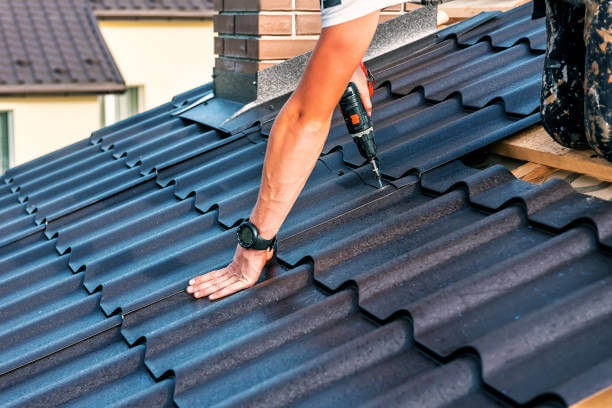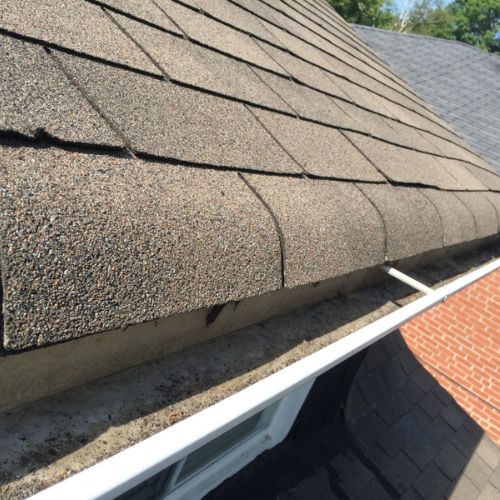Keep Dry Roofing LLC: Making Sure Sturdy Roof Coverings for Your Peace of Mind
Ultimate Checklist for Examining the Problem of Your Roofing System and Identifying Possible Issues
Checking the problem of your roofing system is a prudent technique for any house owner looking to safeguard their building financial investment (Keep Dry Roofing LLC). Regular assessments can expose potential concerns before they escalate right into expensive repairs or replacements. By following a comprehensive list customized to examine the numerous components of your roof, you can acquire important insights right into its present state and preempt any kind of impending problems. This proactive method not only guarantees the durability of your roofing system yet also contributes to keeping the architectural honesty of your home.

Roofing System Evaluation Devices
These tools help in discovering prospective issues, assessing the overall problem of the roofing system, and figuring out the required maintenance or fixings required. One of the main tools utilized in roofing examinations is a dampness meter, which helps identify areas of caught dampness within the roofing system layers that might show leakages or water damage.

In addition, a digital electronic camera or smartphone is important for recording the inspection procedure, capturing photos of any damage or locations of issue for further assessment. Various other tools such as binoculars, roof covering probes, and safety tools like ladders and harnesses are vital for a secure and extensive roof inspection. By using these tools properly, inspectors can carry out extensive analyses, recognize problems without delay, and suggest appropriate options to preserve the roof covering's integrity.
Outside Roof Covering Assessment
To extensively examine the condition of a roof system, an exterior roofing system evaluation is crucial to examine the surface area for indications of wear, damages, or potential concerns. During an outside roofing evaluation, it is vital to start by checking out the shingles or roof product.

Moreover, review the seamless gutters and downspouts for obstructions or damages that can bring about water back-up and overflow onto the roof (Keep Dry Roofing LLC). Trim any looming branches that can massage against the roof covering surface area or give very easy accessibility for insects. Analyze the total tidiness of the roofing system, as debris buildup can preserve dampness and accelerate roof deterioration. By performing a thorough outside roofing assessment, property owners can identify and address potential concerns before they escalate right into expensive repairs.
Interior Ceiling Analysis
Upon going into the interior space, a comprehensive assessment of the ceiling is vital straight from the source to determine any type of indications of water damage, leaks, or architectural concerns. Begin by visually examining the ceiling for any staining, drooping, or peeling off paint, as these can show important site water infiltration from the roofing. Any type of moldy smells or wetness in the air need to likewise raise concerns concerning possible roofing system issues.
Attic Examination
The attic room offers as a crucial component of the roof system, supplying insights into possible issues that may not be visible from the exterior or inside of the home. During the attic evaluation, it is essential to inspect for indications of water damage, such as water stains, mold development, or rotting wood, which could show a leakage in the roof covering. Regularly analyzing the attic room can assist determine prospective roof problems early on, allowing for prompt repair services and maintenance to prolong the lifespan of the roof covering.
Resolving Usual Roof Covering Troubles
Determining and promptly fixing usual roof problems is important in preserving the structural honesty and long life of a roof system. Among the most frequent concerns property owners face is a dripping roofing system, often triggered by damaged or missing out on roof shingles, improper installment, or scrubby flashing. It's vital to deal with leakages quickly to prevent water damages to the inside of the property and possible mold development. An additional typical trouble is roofing system air flow issues, which can cause excess heat and dampness buildup in the attic, creating premature degeneration of the roofing products. Poor air flow can also cause higher energy expenses as a result of inefficient temperature level law. Additionally, the build-up of particles such as fallen leaves, branches, or snow on the roof can block drain systems and bring about water pooling, which dig this may ultimately create roof leaks or architectural damages. Regular evaluations and upkeep can aid recognize and address these typical roofing troubles prior to they escalate into more considerable problems.
Conclusion
To conclude, a thorough evaluation of your roof is important to recognize prospective problems and make sure the overall problem of your roof covering. By using the proper devices and performing outside, attic, and interior evaluations, common roof covering issues can be dealt with promptly. Routine maintenance and prompt repair services can help protect against considerable damage and extend the lifespan of your roof covering.
One of the main devices utilized in roof assessments is a moisture meter, which aids identify locations of trapped dampness within the roofing system layers that can indicate leakages or water damage. Various other devices such as binoculars, roof covering probes, and security tools like harnesses and ladders are critical for a risk-free and thorough roofing system examination.To thoroughly examine the problem of a roofing system, an outside roof covering evaluation is necessary to examine the surface area for signs of wear, damage, or prospective concerns. Assess the overall tidiness of the roof covering, as debris buildup can maintain dampness and accelerate roofing system degeneration. Keep Dry Roofing LLC. In addition, the accumulation of debris such as leaves, branches, or snow on the roofing system can obstruct drain systems and lead to water merging, which might eventually cause roofing system leaks or structural damages